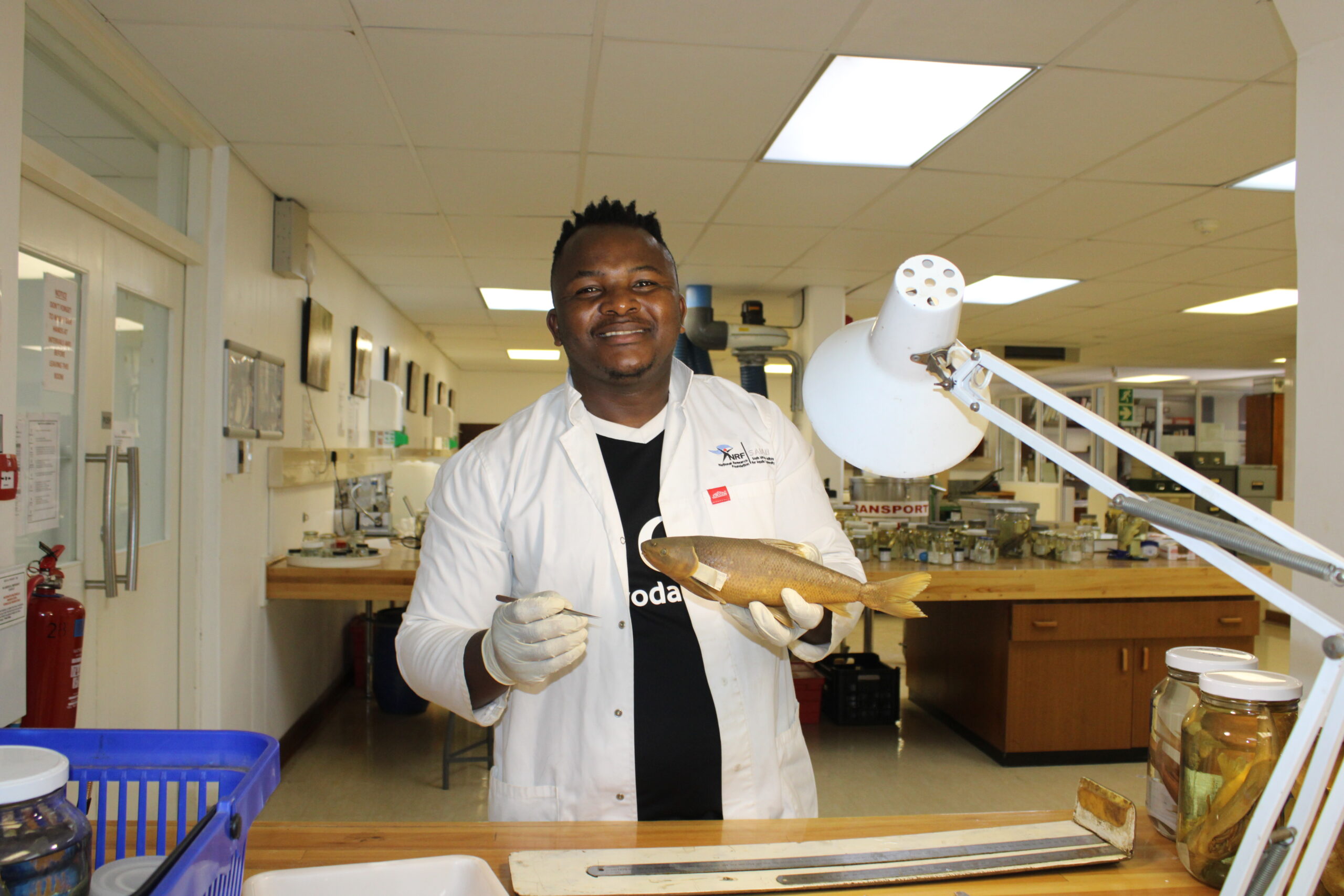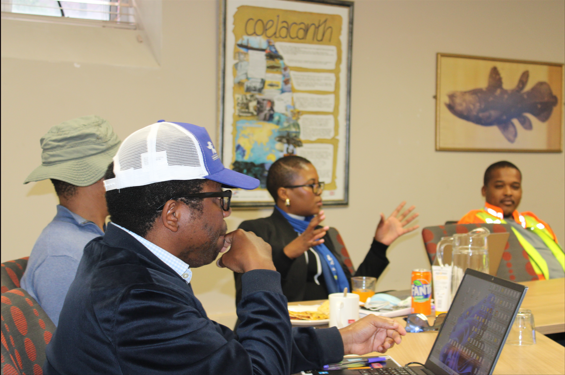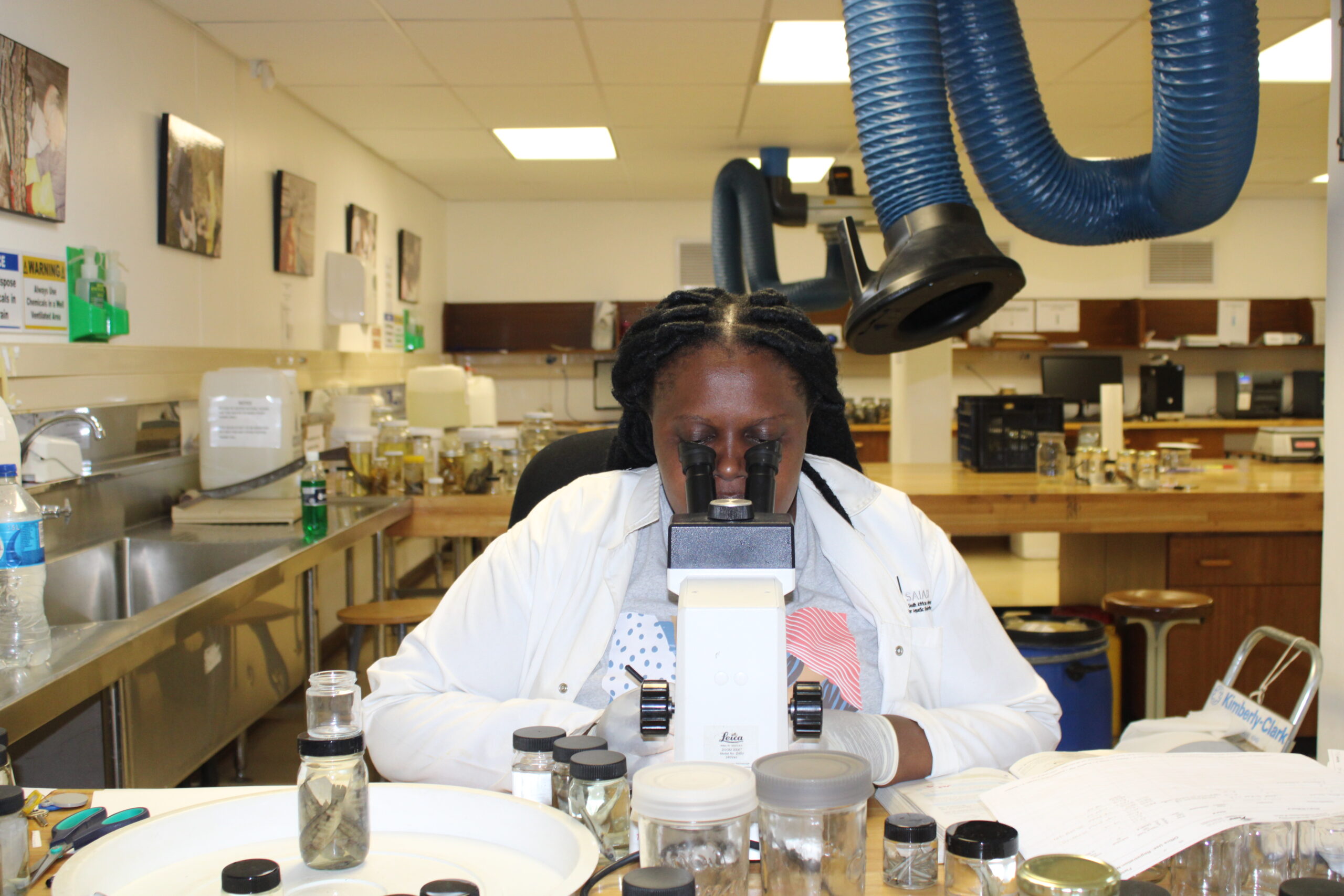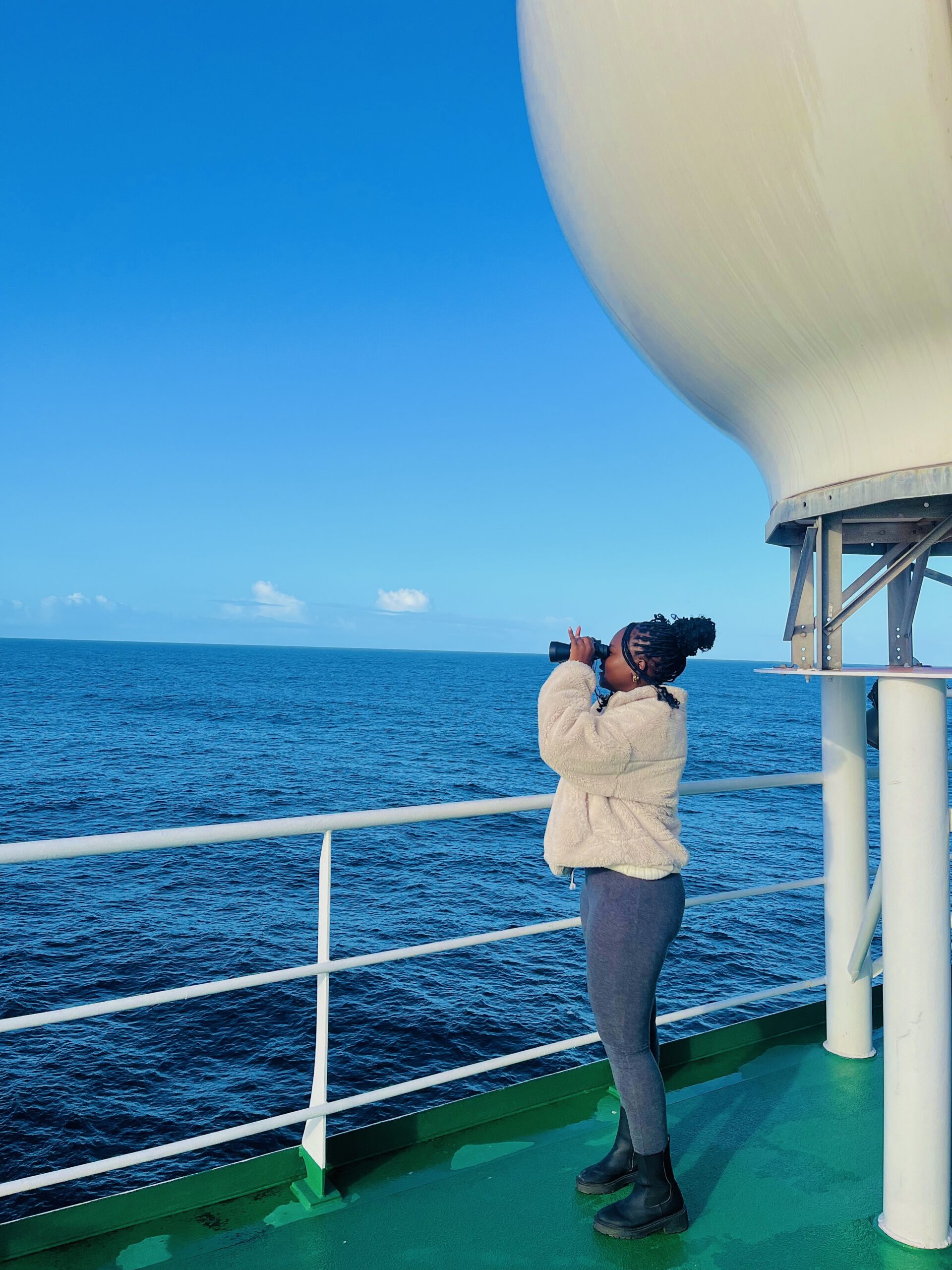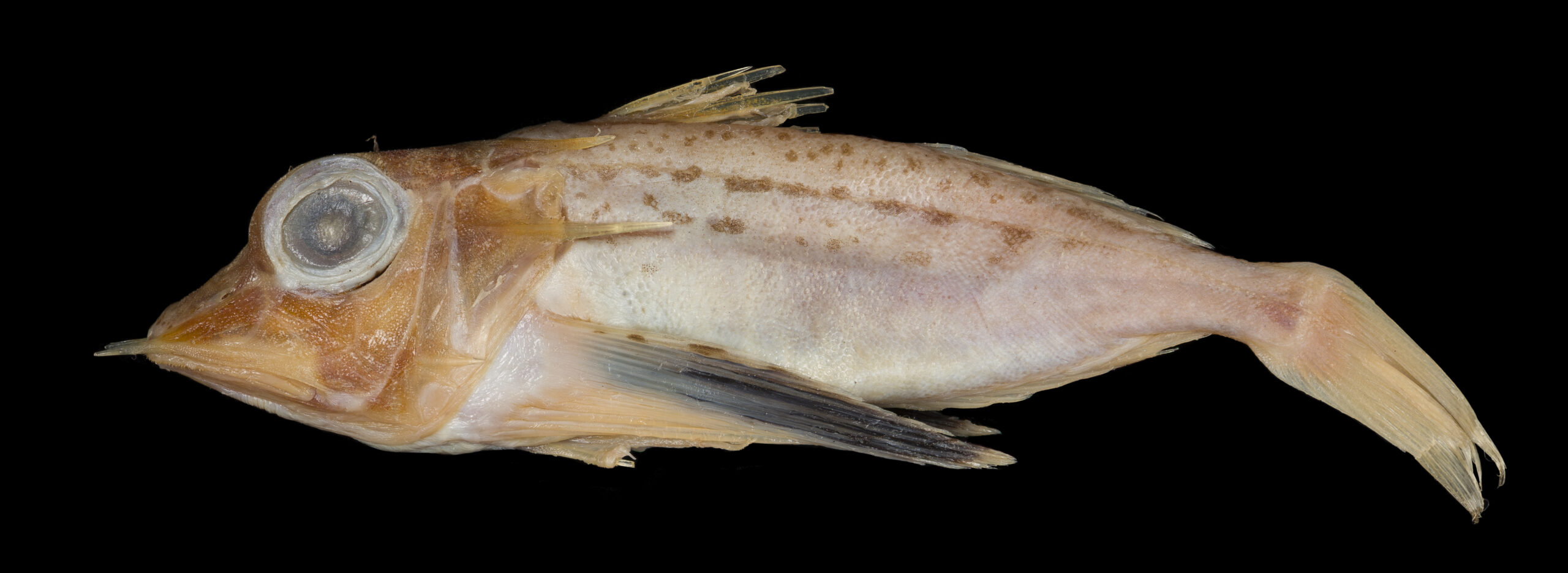By: Siyamthanda Ndinisa & Mbali Ngulube
Dr. Mpho Ramoejane, a former PhD student of NRF-SAIAB, returned since graduating through supervision from the Institute. Dr. Ramoejane who is now a lecturer in the Zoology Department at the University of the Free State visited the NRF-SAIAB Collections Facility to continue his research on the taxonomy and diversity of Southern African mudfishes of the genus Labeo (mudfish). From his PhD research, Mpho discovered a new species of Labeo (mudfish) that is endemic to the Western and Eastern Cape provinces. This species had been mistakenly considered to be the same as the one that occurs in the Orange River system. He is now in the process of formally describing this species.
Dr. Ramoejane’s journey with NRF-SAIAB began in July 2007 during SAIAB’s winter school where he was exposed to the various methods that are used for sampling in freshwater systems and had first-hand experience on genetic analysis. He thoroughly enjoyed this experience and he returned in 2008 to begin his academic journey as an MSc student under the guidance of Dr. Ernst Swartz and the late Professor Olaf Weyl. Dr. Ramoejane’s MSc research exposed many exciting scientific questions which he then pursued through his PhD research. Dr. Ramoejane excelled and graduated with his PhD from Rhodes University in 2017 becoming one of the black South African freshwater taxonomists and systematists to be trained through the NRF-SAIAB.
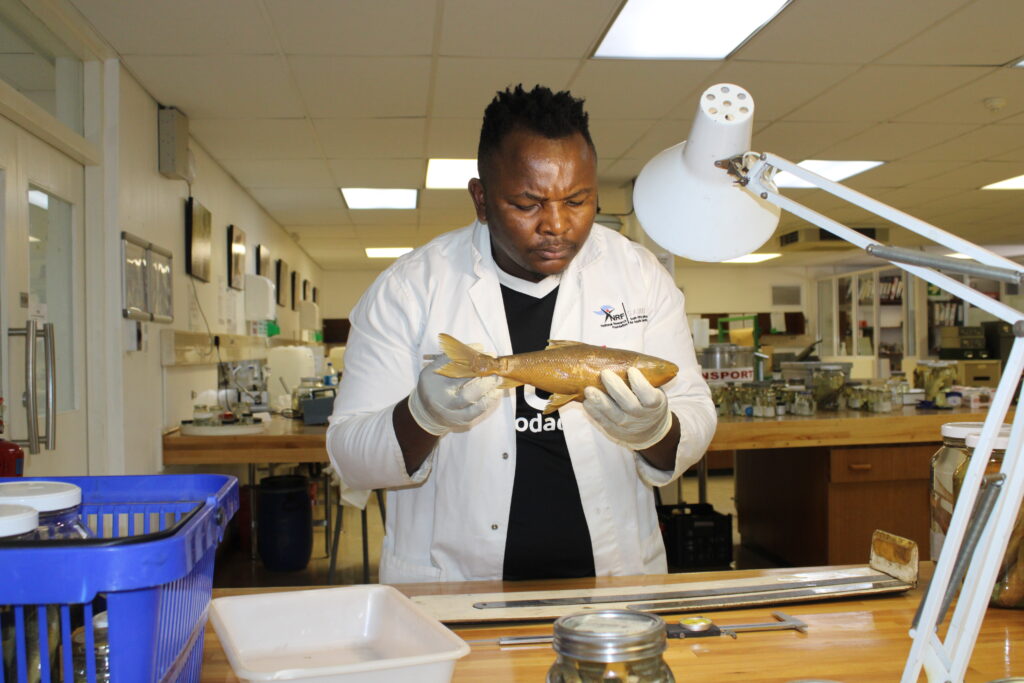
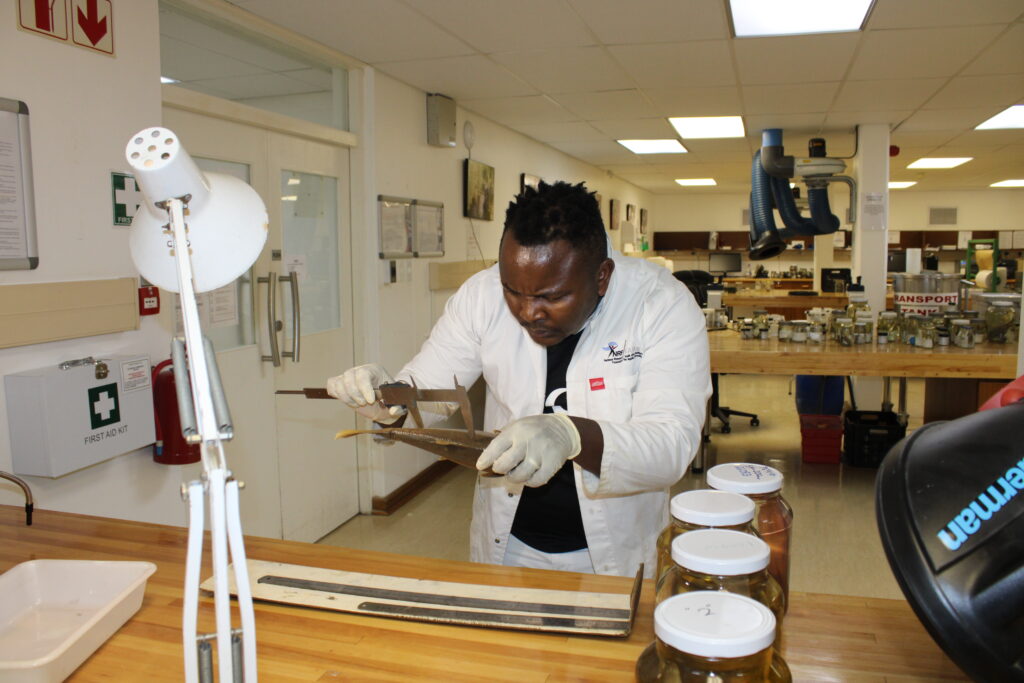
Dr. Ramoejane meticulously examining labeo specimens in the NRF-SAIAB National Fish Collections Facility.
Expressing his gratitude to the NRF-SAIAB, Dr. Ramoejane highlighted the significance of this National Facility’s state-of-the-art research platforms that are available to researchers and students, particularly those from historically disadvantaged institutions (HDI’s). He remarked that, “The lack of integrated research infrastructure at HDI’s remains a major impediment to undertaking cutting edge research at these institutions and may hamper the growth and development of researchers and students”. He added that access to facilities at the NRF-SAIAB has been immensely helpful. His visit to the insititute was facilitated through the REFRESH Project, a multi-institutional research project funded by the NRF-FBIP Programme to fill information gaps in South African freshwater systems. Dr. Ramoejane is a collaborator in this project and he is working with Professor Albert Chakona, NRF-SAIAB’s Chief Scientist and Co-PI of the REFRESH Project.
Reflecting on the growth of NRF-SAIAB over the years, Dr. Ramoejane acknowledged the positive changes, particularly in terms of diversity. He commented, “There are more students now, especially black students. When I joined the institution, there were only three of us. SAIAB is an institution that actively supports black students, and even the management has become more diverse compared to when I was a student here.”
Looking towards the future, Dr. Ramoejane aspires to become a Senior Scientist and increase the number of his publications. “This year I am hoping to produce at least seven publications. It is quite ambitious but, if you don’t set higher goals for yourself, you will never achieve anything in life,” he added. His dedication to advancing scientific knowledge and contributing to the field reflects the ongoing success and impact of NRF-SAIAB.
Dr. Ramoejane asserts that the NRF-SAIAB significantly contributes to the advancement of scientific knowledge and the promotion of conservation efforts. “Universities also play a role in promoting conservation but institutions like SAIAB have more contribution towards this cause”, he added.
Dr. Ramoejane envisions a promising future for aquatic biodiversity research. “I am excited to see the progressive increase in the number of research outputs from researchers, students and Honorary Research Associates of the NRF-SAIAB, particularly a diverse mix of local, regional and international scholars. The international recognition of the institute is certainly something to be proud of.” Dr. Ramoejane says he would advise other aquatic biodiversity researchers to visit the collections facility at SAIAB as that would significantly advance their research since the facility has many different aquatic specimens in hand. “The NRF-SAIAB Fish Collection is a treasure trove of valuable specimens that are linked to tissues samples in the BioBank, and the integrated Margaret Smith Library is a repository of well-curated reprints and reference material. This allows visiting researchers to generate comprehensive data from genetic sequences, radiographs and morphometric data “under one roof”, with no pressing need for them to do field work”, added Dr. Ramoejane.
